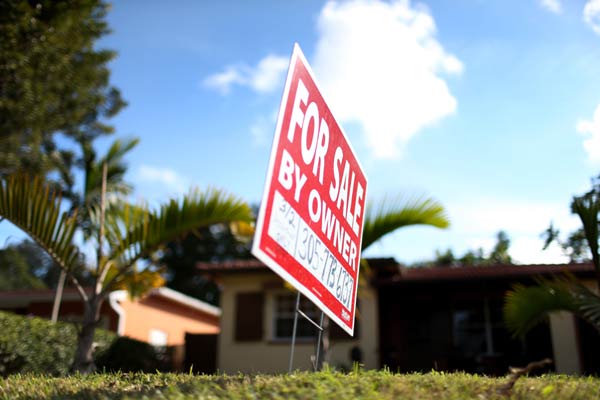 |
|
A for-sale sign in front of a house in Miami, Florida. An increasing number of Chinese are buying properties in Miami, attracted by its clean beaches and tropical climate. [Photo/Agencies] |
Miami has a Little Havana and Little Haiti, a neighborhood known as Westonzuela and even the Venetian Islands. What it doesn't have is a Chinatown.
Shan-Jie Li wants to do something about it. The developer from the city of Linyi aims to make Florida's most-populous metropolitan area, with its clean beaches and tropical climate, a destination for Chinese property investors.
"We are focused on bringing to Miami the new wave of Chinese who are wealthy and educated," Li said. "The environment in Miami makes for a very suitable lifestyle. Playing golf and going to the beach are huge attractions."
While Miami's rebound from the financial crisis was driven by South Americans snapping up vacant condos, the city now is looking as far as Beijing to sustain the growth. Chinese have become one of the fastest-growing segments of foreign buyers, according to the Miami Association of Realtors, as the weakening Argentine peso, Brazilian real and Russian rouble discouraged investment from those countries.
"Property values have gone up, and the currencies shifted in the other direction," Daniel de la Vega, president of luxury real-estate broker One Sotheby's, said in an interview in Miami. "So South American investors may look at us and say it's not as good of an opportunity."
Since the depths of the crisis, when downtown vacancy rates climbed to 60 percent, cranes have returned to the skyline and property values have surged. A $131 million modern-art museum backed by Jorge Perez, billionaire owner of Related Group, opened in 2013; a science museum is under construction next door along the Biscayne Bay waterfront.
Latin American buyers made up 62 percent of purchases in Miami last year, led by Venezuelans, Argentines, Brazilians and Colombians, according to the realtors' association. They helped drive the median home price to $276,000 in December, up 54 percent from $179,000 at the end of 2011, according to Zillow.com, a real estate website.
"We have quite a number of Chinese buyers; it's not even 5 percent of the total but it's growing," Perez said. After he gave a recent speech to University of Miami students, Chinese parents of one pupil bought $20 million in real estate, he recalled.
"Russia had been a good source of buyers, particularly in beach locations, and we're seeing it decline," he added. "I have no idea if South Americans will continue to buy as before."
Armando Codina, executive chairman of developer Codina Partners, isn't taking chances. He sent a representative to Beijing to shore up sales at his $1 billion Downtown Doral project, which comprises a master plan for a new downtown, including a city hall and school in an area of northwest Miami-Dade County.
